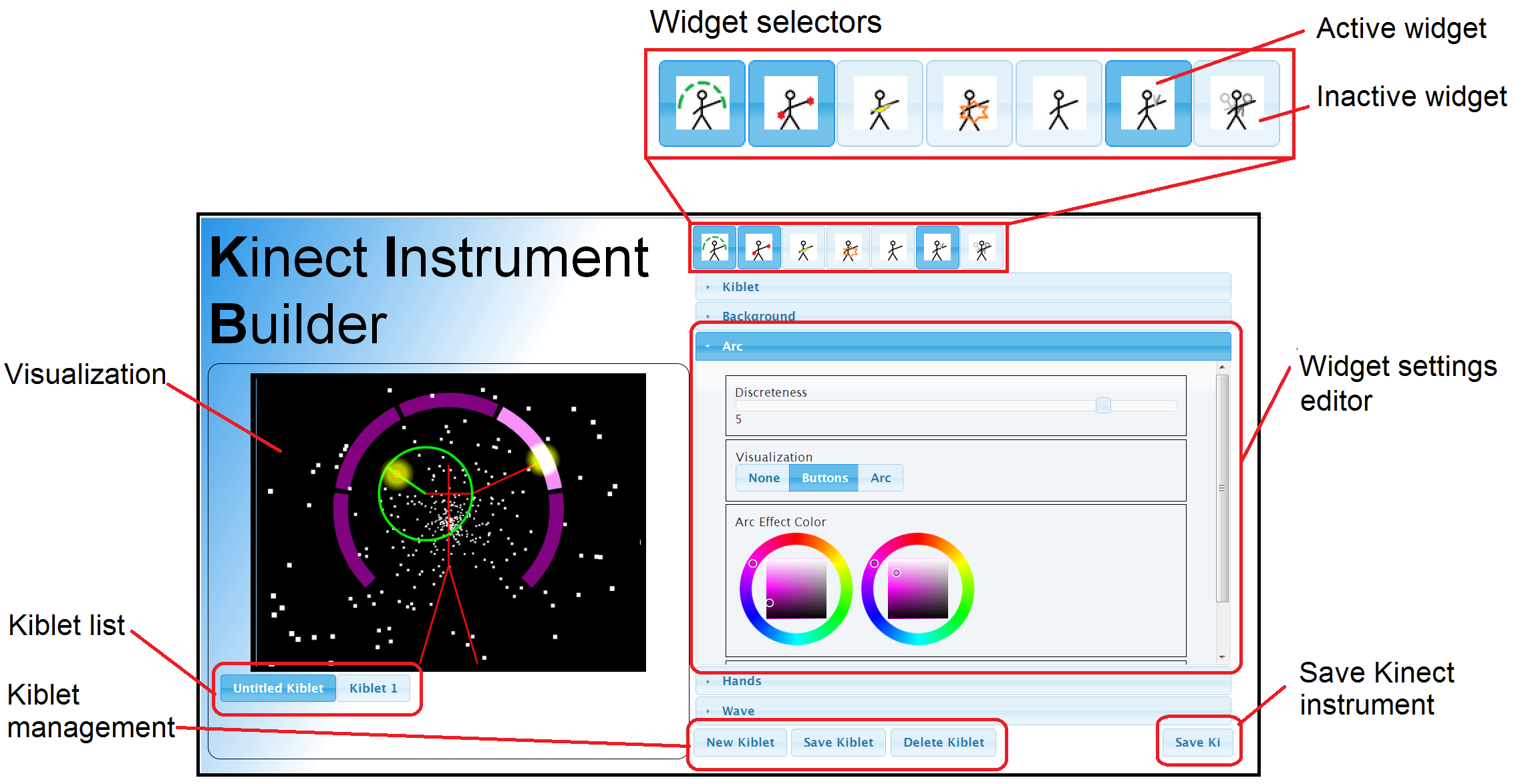Oral presentation at NIME 2013.
Edward Zhang and Rebecca Fiebrink. KIB: Simplifying Gestural Instrument Creation Using Widgets (Edward Zhang), In Proceedings of the International Conference on New Interfaces for Musical Expression (NIME), 2013.
TL;DR
Mix and match individual gestural “widgets” to easily make gestural digital musical instruments (DMIs) like in V-Motion.
Overview
The most complicated and interesting part of digital musical instruments (DMIs) is mapping the direct inputs from a controller to sound parameters for the instrument. For gestural DMIs, there is often a large gap between interpreting the raw data (e.g. 3D range images or coordinates of a joint) into more meaningful gestures. Traditionally, this gap has been closed via machine learning, which is often opaque to the user, or directly by implementing direct mappings themselves, which is technically difficult and verbose.
Inspired by the V-Motion system as well as widget-based DMI design tools in the multitouch space such as TouchOSC, we designed the Kinect Instrument Builder (KIB), a system that simplifies gestural instrument creation by providing a set of widgets. Each of these widgets represents an intuitive, high-level gesture that can provide a continuous output (such as tracking the performer’s arm “stretch”) or trigger a discrete event (such as a “punch”). While individually very simple, combining multiple widgets can enable in complex interactions with the instrument since many gestures are not independent.

System Implementation
The Kinect Instrument Builder consists of two distinct components. The instrument design interface is a web application that allows the user to rapidly construct a widget-based instrument. The user can load the resulting instrument into the performance interface, which will process gesture recognition for the widgets and output OSC messages as appropriate. It will also display a visualization to provide real-time feedback to the performer and visual interest to the audience.